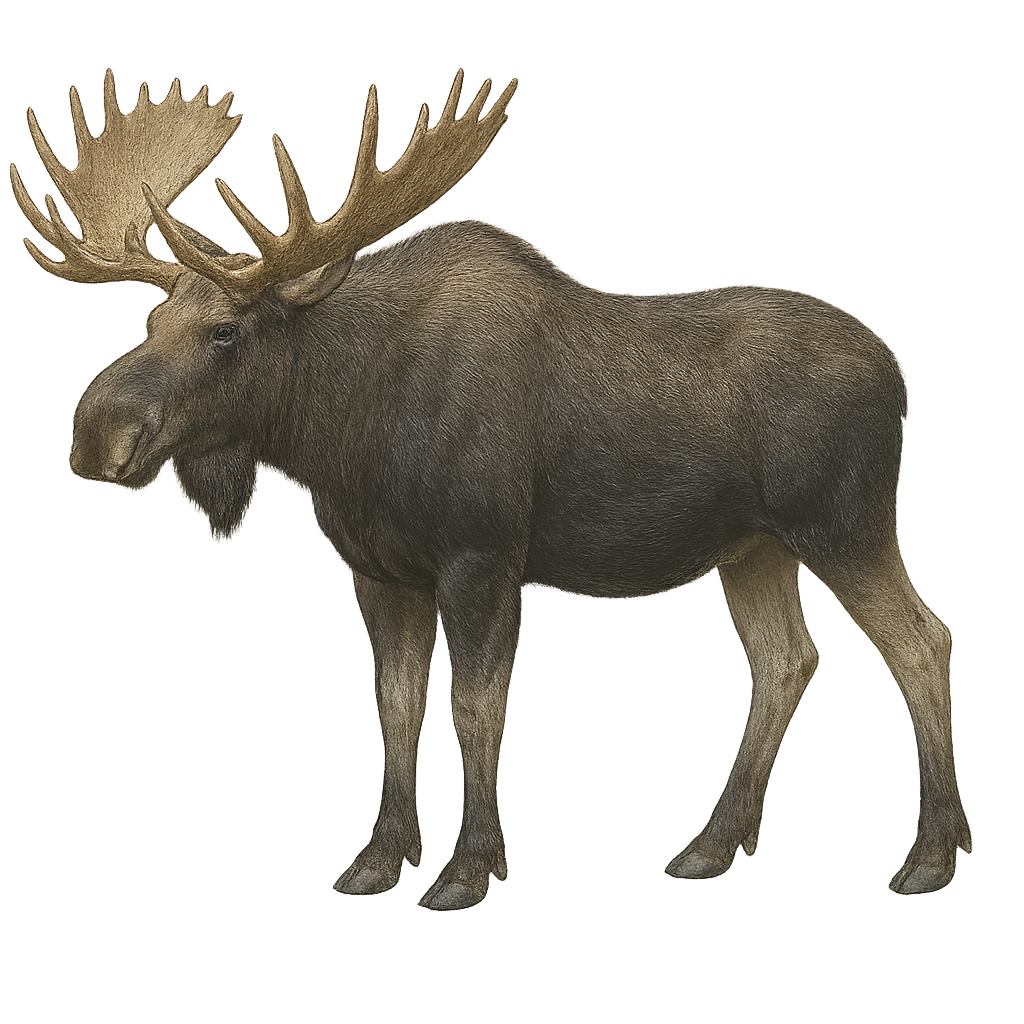Your wildlife photography guide.
Explore the alaskan moose in detail, study its behavior, prepare your shots.
Where to observe and photograph the alaskan moose in the wild
Learn where and when to spot the alaskan moose in the wild, how to identify the species based on distinctive features, and what natural environments it inhabits. The WildlifePhotographer app offers tailored photography tips that reflect the alaskan moose’s behavior, helping you capture better wildlife images. Explore the full species profile for key information including description, habitat, active periods, and approach techniques.
Alaskan Moose
Scientific name: Alces alces gigas

IUCN Status: Least Concern
Family: CERVIDAE
Group: Mammals
Sensitivity to human approach: Suspicious
Minimum approach distance: 50 m
Rut period: September to October
Gestation: 230-240 jours
Births: May to June
Habitat:
Boreal forests, wetlands, open meadows
Activity period :
Activity varies depending on season, weather, or human pressure.
Identification and description:
The Alaskan moose, or Alces alces gigas, is the largest member of the deer family. It is distinguished by its impressive size, reaching up to 2.1 meters at the shoulder and weighing over 700 kg. Its wide, flat antlers, which can span up to 2 meters, are characteristic of males. The Alaskan moose primarily inhabits the boreal forests and wetlands of Alaska and Canada. It is well adapted to cold climates thanks to its thick coat. As a herbivore, it feeds on leaves, bark, and aquatic plants. Although generally solitary, it can be seen in small groups during the rutting season.
Recommended lens:
400 mm – adjust based on distance, desired framing (portrait or habitat), and approach conditions.
Photography tips:
To photograph the Alaskan moose, focus on twilight hours when it is most active. Use a telephoto lens of at least 400mm to capture detailed images from a safe distance. Boreal forests and wetlands provide an ideal natural backdrop. Be patient and discreet, as the moose is suspicious. Consider using a tripod to stabilize your camera, especially in low light. Finally, always respect wildlife and maintain a safe distance of at least 50m to avoid disturbing the animal.
The WildlifePhotographer App is coming soon!
Be the first to explore the best nature spots, track rutting seasons, log your observations, and observe more wildlife.
Already 1 430 wildlife lovers subscribed worldwide

